Bibliothèque de Jeongdok (정독도서관)
394.3M 2021-02-01
48, Bukchon-ro 5-gil, Jongno-gu, Seoul-si
+82-2-2011-5799
La bibliothèque de Jeongdok a ouvert ses portes en janvier 1977 à l’ancien emplacement du lycée Gyeonggi à Bukcheon dans l’arrondissement de Jongno-gu à Séoul. Cette bibliothèque publique municipale s’ennorgueillit de plus d’un demi-million de livres et de 16 300 ouvrages de référence. Le musée de l’éducation de Séoul à l’intérieur de la bibliothèque contient une collection de 12 000 ouvrages de référence.
La bibiothèque propose non seulement les services de base (prêt de libres, mise à disposition d’archives et de salles de lecture pour le public), mais elle offre aussi divers programmes culturels, parmi lesquels des conférences mensuelles animées par des auteurs invités, des expositions de photos, des séminaires de lecture, et des spectacles de musique et de danse. La librairie organise enfin des programmes pédagogiques sur l’économie, les sciences et la société, et propose trois projections de films par semaine dans la salle d’audiovisuel, tous les mardis, les jeudis et les dimanches.
Grâce à son énorme collection de références et ses programmes culturels, la bibliothèque a pour but d’enrichir la vie des habitants de Séoul en leur permettant l’accès aux dernières informations et à de nombreux programmes pédagogiques.
Onmaeul (온마을)
395.0M 2021-03-22
127, Samcheong-ro, Jongno-gu, Seoul
+82-2-738-4231
A place that sells dishes made with beans, which are good for the health. This restaurant's signature menu is pureed soybean stew. This Korean dishes restaurant is located in Jongno-gu, Seoul.
Centre d’art Sonje (아트선재센터)
410.0M 2019-03-26
87, Yulgok-ro 3-gil, Jongno-gu, Seoul-si
+82-2-733-8945
Le centre d’art Sonje est un complexe artistique qui a été construit en 1998. Sa création récente n’empêche la grande qualité des expositions.
En plus de cela, le complexe propose des projections de films, des spectacles de danse ou de théâtre et des concerts. Il y a une salle au sous-sol pouvant contenir 250 personnes.
Le jeu des lumières et le système audiovisuel sont utilisés pour les projections de films, les performances et les conférences. Il y a aussi plusieurs critiques de films concernant la vie dramatique de certains artistes. D’autres festivals s’éténdent de concerts internationaux à des d’expositions spécilales sur les producteurs cinématographiques allemands.
Si vous souhaitez vous détendre, dirigez-vous vers le hall de la maison traditionnelle coréenne “Hanokgwan” situé au 1er étage: vous y trouverez une architecture unique avec une bâtisse de style coréen traditionnel rénové en style moderne. Cette dernière est entourée de bambous apportant une atmosphère apaisante. Elle est parfois aussi utilisée comme espace d’exposition.
Dans les environs du centre d’art Sonje se trouvent le palais royal de Gyeongbokgung et Insa-dong.
Lycée Jungang (bâtiment principal) (중앙고등학교본관)
431.9M 2019-07-22
164, Changdeokgung-gil, Jongno-gu, Seoul-si
+82-2-742-1321
Le lycée Jungang, situé à Jong-ro (près de Samcheongdong-gil), a été construit pour éduquer le peuple au coeur de la crise nationale qui sévissait au début du XXème siècle. Le bâtiment principal de l’école a été construit en 1937 après qu’un incendie ait détruit la bâtisse de deux étages d’origine en 1934. L’architecture gothique moderne de ce bâtiment est particulièrement significative pour les Coréens, car celui-ci a été conçu par un architecte coréen durant l’époque de la colonisation japonaise. Park Dong Jin, qui a conçu ce bâtiment, est l’un des premiers architectes coréens modernes, et a dessiné les plans du bâtiment principal et de la bibliothèque de l’université Korea, ainsi que l’immeuble du journal Chosunilbo. Le lycée Jungang a été désigné site historique n° 281. De nombreux leaders de la nation ont été éduqués derrière les murs de ce bâtiment gothique durant la période sombre où la Corée a tenté d’échapper au joug colonial.
Le bâtiment principal, situé en face de la porte principal, est une bâtisse en granit de deux étages en forme de H, conçu dans le style gothique, avec une tour de quatre étages au centre.
Artee Riders Club - 아띠라이더스클럽 (외국어사이트용)
431.8M 2019-11-27
Séoul, Jongno-gu, Bukchon-ro 5gil 43
+82-1666-1693
Artee Riders Club est la première agence en Corée spécialisée dans les tours en pouce-pouce. Cette agence vous propose ainsi de monter à bord de ce véhicule original pour découvrir par exemple Bukchon, Seochon (zone traditionnelle de la capitale) tout en bénéficiant de services de guide. Par ailleurs, un club a aussi été créé afin que les visiteurs puissent poser et faire conserver leurs bagages, une structure fournissant également des informations touristiques et un service de boissons.
Musée des chouettes (부엉이박물관)
434.0M 2022-09-19
143, Bukchon-ro, Jongno-gu, Seoul-si
+82-2-3210-2902
Si vous êtes un passionné des chouettes et que vous aimez l’art des pliages, nous vous conseillons le musée des chouettes. Ce musée ayant pour thème les chouettes, comporte nombre d’oeuvres d’art, de pliages, d’objets utilitaires et accessoires en tout genre. Ces objets proviennent de 70 pays tels que la Chine, les Etats-Unis, la République Tchèque ou la Pologne. Plus de 2,000 pièces y sont exposées.
Maeumeul Damanaemyeon (마음을담아내면)
436.2M 2021-03-19
79, Yulgok-ro 3-gil, Jongno-gu, Seoul
+82-2-732-7768
This is a Korean cuisine located in Jongno, Seoul. Also well-known for steak and stir-fried ingredients over rice. The best menu at this restaurant is noodles.
Inwoohouse [Korea Quality] / 인우하우스 [한국관광 품질인증]
448.6M 2023-04-13
9, Gyedong 6-gil, Jongno-gu, Seoul
02-742-1115
Run by a couple hailing from Bukchon, Inwoo House is located in an alleyway in Gye-dong, Jongno-gu, which is part of Bukchon that is well-known for old hanok houses. Inwoo House, meaning 'the house of Inwoo,' is inhabited by the owner couple and eight-year-old son Inwoo and his younger brother Yeonwoo. The couple, who have always lived in Bukchon, moved to Inwoo House in 2010; their parents run another guesthouse -- Yeonwoo House -- in Gahoe-dong, which isn’t far from Inwoo House. These two hanok guesthouses seek to provide guests with an opportunity to experience the true aspect of traditional Korean house amid the natural environment. Inwoo House, which has the typical style of hanok in the area, features a cozy yard, a toenmaru (narrow wooden porch running along the outside of the building), and several charming decorative items. It has three rooms – Tokki-bang and Haejanggeum-bang situated in Sarangchae (a detached building) and Nori-bang, which is a communal space. Due to its quiet location, guests can enjoy relaxation with a serene atmosphere in their rooms, which are decorated with calligraphic works and furniture inlaid with mother-of-pearl in a simple way. Each room is equipped with a bathroom. The guesthouse offers breakfast such as toast or tteokguk (rice cake soup). Inwoo House is an ideal place to stay for guests with children as the owner couple have children with whom children can play in the alley, yard, or toenmaru with an interesting hanok environment. The guesthouse also provides various traditional activities including traditional Korean clothes experience, traditional Hanji (Korean paper) craft experience, traditional knot bracelet making, and fan decorating, which are popular among foreign tourists and children. It is adjacent to restaurants, coffee shops, convenience store, and other tourist attractions including Gyeongbokgung Palace, Changdeokgung Palace, Insa-dong, and Samcheong-dong.
Darakjeong (다락정)
460.4M 2021-03-26
131-1, Samcheong-ro, Jongno-gu, Seoul
+82-2-725-1697
Darakjeong has been popular for a long time because of the simple taste of its traditional Mandu (Korean stuffed dumpling). Since its opening in 1991, tasty soup and scrumptious Mandu have been served. A fist-sized Mandu is fully packed with seasoned meat, bean-curd, and various vegetables. Its thick dough makes it chewy and delightful. For one person, “Manduguk”(boiled dumpling soup) is a good choice. The delicious and nourishing taste of Mandu goes well with the sweet, spicy, and fresh taste of the soup. Manduguk is served in a brass bowl which keeps the food warm while eating. For a large-size group, “Mandujeongol” cooked with various vegetables in a casserole is recommended. There are two types of Mandujeongol that have different tastes. The main characteristic of “Kimchi Mandujeongol” is its spicy flavor, which reminds people of the refreshing taste of Kimchi soup, and “Tojang Mandujeongol” expounds on the savory taste of bean-paste soup. Tojang means folk soybean-paste. “Nokdujeon”(a Korean pan-fried dish with green mung bean) is another famous dish at Darakjeong, which is pan-fried with a very light seasoning to emphasize the original taste of Nokdu (green mung bean). Salted oysters with hot pepper are served with Nokdujeon instead of soy sauce, which is a perfect match.
Bukchonmaru hanok guesthouse [Korea Quality] / 북촌마루한옥게스트하우스 [한국관광 품질인증]
473.6M 2020-09-10
152, Changdeokgung-gil, Jongno-gu, Seoul
+82-10-3253-8751
Bukchonmaru Hanok Guesthouse is located between “Bukchon Views 2 and 3” on a hill in Bukchon Village in Seoul. This two-storied hanbok building with a terrace, which is rarely found among other hanok structures in the area, offers a splendid view of Seoul. In particular, the summit of a hill next to the main gate of Choong Ang High School where the guesthouse is situated is known as the filming location for the famous Korean TV series Winter Sonata (2002). When you open the main gate and go up to the first floor, a small yard is seen with a group of jars on one side. After entering the sliding door through the yard, there is daecheong maru (main floored room) that features the doors opening in all directions and a high ceiling with rafters, making the space open and cozy. The hanok building consists of two floors – the ground floor is equipped with special furniture, a jar table and a log chair made by the owner, and on the first floor are guestrooms comprised of one large room and two small rooms. The neat and clean rooms are designed in a simple way and have lovely bedding with the pattern of five cardinal colors. Its staff members can speak English and Chinese to communicate with guests from other countries. Every morning, guests engage in animated conversation while enjoying a Korean home-style breakfast prepared by the owner in a friendly atmosphere. After having breakfast, if guests want, they can try on traditional Korean clothes (hanbok) and take photographs inside and around the guesthouse to create interesting memories. The guesthouse also provides a hanbok rental service (KRW 30,000 for a day) and tourists wearing traditional Korean clothes can enter both Changdeokgung Palace and Gyeongbokgung Palace, which can be reached on foot within 10 to 15 minutes, free of charge. Moreover, guests can enjoy an open view of the area including Gahoe-dong, Gye-dong and even the lights of the Namsan Seoul Tower at night from the roof top.
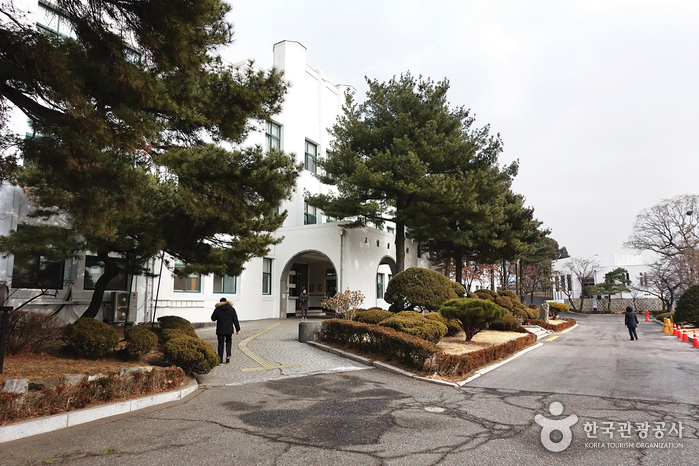

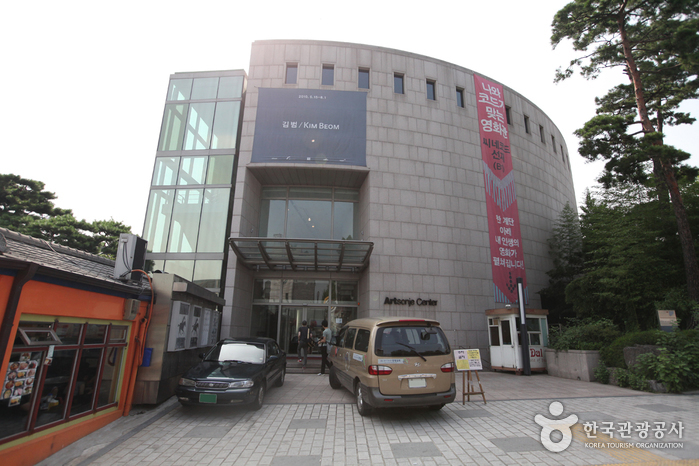
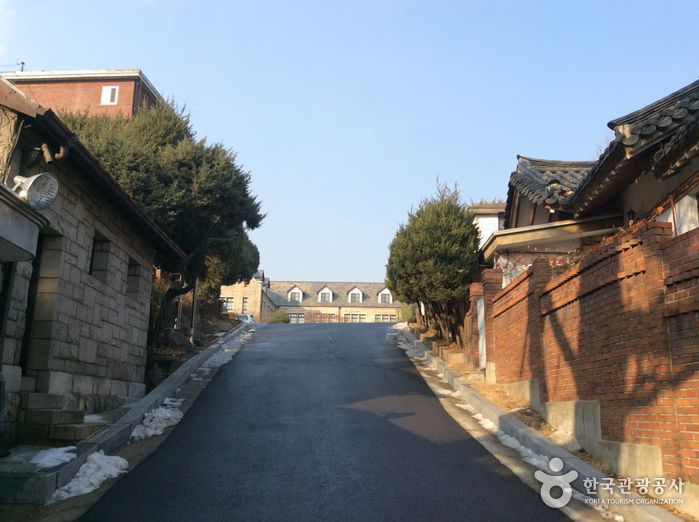
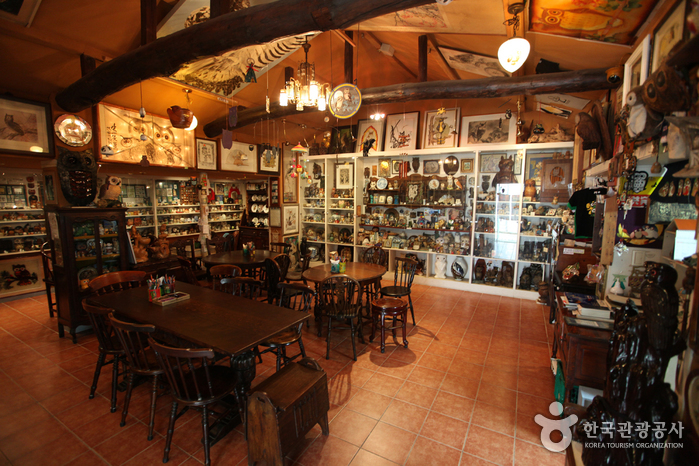
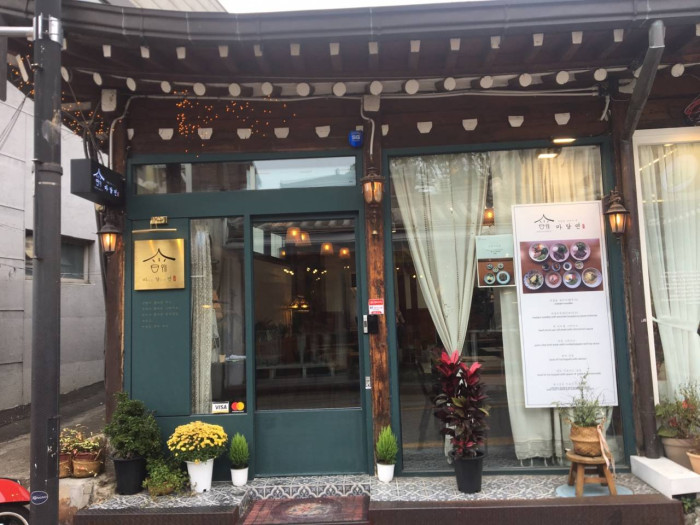
![Inwoohouse [Korea Quality] / 인우하우스 [한국관광 품질인증]](http://tong.visitkorea.or.kr/cms/resource/64/2633664_image2_1.jpg)
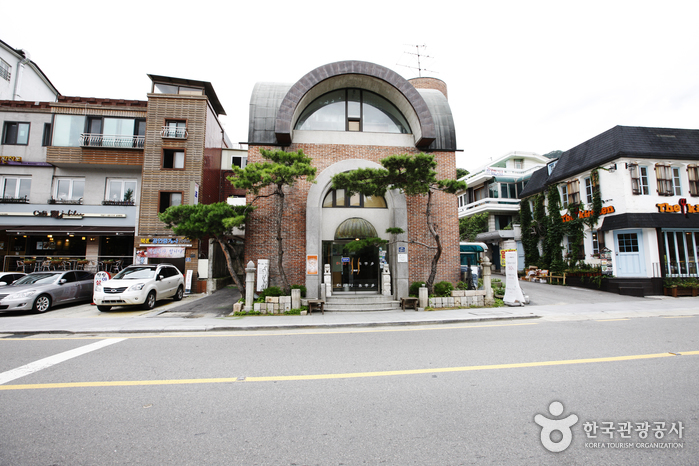
![Bukchonmaru hanok guesthouse [Korea Quality] / 북촌마루한옥게스트하우스 [한국관광 품질인증]](http://tong.visitkorea.or.kr/cms/resource/32/2574032_image2_1.jpg)
 Français
Français
 한국어
한국어 English
English 日本語
日本語 中文(简体)
中文(简体) Deutsch
Deutsch Español
Español Русский
Русский